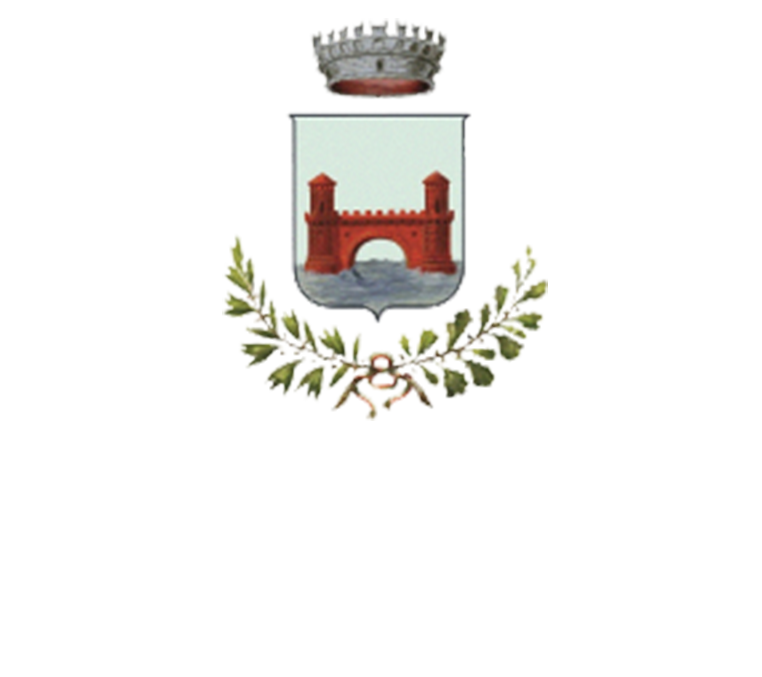
COMUNE DI COMUNANZA (AP)
Museo Arte Sacra e Biblioteca Civica "Pietro Spinucci"
Museum of Sacred Arts and “Pietro Spinucci” Public Library
Chiesa S. Caterina d'Alessandria d'Egitto e Organo Munumentale Barocco
Church of St. Catherine of Alexandria and Monumental Baroque Organ
La Dinastia Ghezzi
The Ghezzi Family
Chiesa S. Francesco
Church of St. Francis
Ex Mulino e Centralina Idroelettrica
Former Watermill and Hydro-power plant
ADRIANO LUZI
Adriano Luzi
A colloquio con il restauratore della tomba di Nefertari
C’è un filo diretto che unisce la città dei Ghezzi all’antico Egitto.
Basta seguirlo e si arriva ad Adriano Luzi, restauratore di fama internazionale, originario di Comunanza.
Adriano Luzi ha legato il suo nome a importanti restauri, tra cui la tomba di Nefertari, i dipinti murali del Monastero copto-ortodosso di Saint Antony e la Piramide di Caio Cestio, a Roma.
Per rendergli omaggio, il Comune in passato ha organizzato un ciclo di incontri sull’antico Egitto. Il primo fu dedicato al restauro della tomba di Nefertari, la più bella fra tutte le tombe egizie; il secondo a Cleopatra, regina d’Egitto, presente Carla Alfano, curatrice della mostra di Palazzo Ruspoli a Roma e lo storico dell’arte Stefano Papetti; l’ultimo incontro,è stato dedicato al recupero dei dipinti murali del Monastero copto- ortodosso definito, per la sua bellezza e per la sua spiritualità, “l’Assisi dell’Oriente”. Scoperta nel 1904 dall’archeologo Ernesto Schiaparelli, la tomba di Nefertari, amatissima moglie del faraone Ramses II morta oltre tremila anni fa, si trovava in condizioni piuttosto precarie, a causa dell’umidità e delle infiltrazioni di acqua piovana che minacciavano di far scomparire per sempre i bellissimi dipinti murali. “In realtà, i danni maggiori sono stati provocati – precisò lo stesso Luzi – dalle scellerate iniezioni di gesso e vinavil nell’intonaco durante il restauro degli anni Cinquanta”. L’allarme, comunque, fu raccolto dal Geffy Institute Museum, che mise a disposizione due milioni di dollari per il restauro. I lavori iniziarono nel 1986 e terminarono nel ’92: un intervento delicatissimo, condotto nel massimo rispetto dell’opera da un’équipe internazionale di restauratori guidata da Paolo e Laura Mora dell’Istituto centrale del restauro di Roma che, per questo lavoro, ricevettero nel ’97 a Sassocorvaro il premio Pasquale Rotondi assegnato ai salvatori dell’arte.
Come fu eseguito il difficile restauro? Nella prima fase, ricordò Adriano, si provvedette a stabilizzare i dipinti, applicandovi sopra migliaia di fasce di garza di cotone e di carta giapponese. Poi furono puliti e consolidati gli intonaci, con iniezioni di resina acrilica. Infine, dopo l’incollaggio dei frammenti distaccati, si passò al restauro vero e proprio, che interessò sette stanze dell’ipogeo, per una superficie complessiva di 520 metri quadrati, compresa quella delle suggestive volte stellate. I dipinti raffigurano scene tratte dal Libro dei Moffi e sono di grande fascino. “Impossibile descriverli. Bisognerebbe vederli”, disse. Purtroppo a vederli sono solo pochi fortunati.
Terminato il restauro, la tomba fu chiusa al pubblico e oggi può essere visitata solo da un numero limitatissimo di persone.
Le parole di Luzi alla domanda “Cosa si prova a restaurare una grande opera?” furono: “È stata un’esperienza davvero straordinaria, di quelle che capitano una sola volta nella vita. Sono rimasto continuativamente, notte e giorno, nella tomba per un anno e mezzo e, anche se la mummia di Nefertari non c’era perché trafugata, ho sempre continuato ad avvertirne misteriosamente la presenza. Strano, vero?”.
Luzi partecipò al restauro della tomba dei Leopardi e della tomba Giustiniani, a Tarquinia.
“Le tombe etrusche – spiegò – sono fredde, vi si sente l’angoscia della morte. Ricordo che quando lavoravo nelle necropoli etrusche, eravamo terrorizzati dalla paura di rimanervi chiusi. Quella di Nefertari è stata, invece, un’esperienza profondamente diversa, perché diversa era la civiltà egizia, capace di vivere un rapporto sereno con la morte. Per questo dentro si stava bene: si aveva la sensazione di stare a casa e il tempo scorreva senza che ne sentissi il peso. Era come vivere in un’altra epoca, lontana dalla nostra. Tremila anni di storia separati da un cunicolo e da una porta blindata: fuori: la sabbia rovente del deserto, il vociare dei turisti accaldati, la luce abbagliante del giorno; dentro, il silenzio “assordante”, la luce artificiale delle lampade, il caldo secco della tomba e, soprattutto, il lungo, paziente lavoro di restauro. Una sensazione che non ho mai più provato” nemmeno quando restaurò i dipinti murali del sacello della Piramide di Caio Cestio Epulone, una stanza di sette metri per quattro con una volta a botte, dove si stava davvero male.
Luzi raccontò, infine, il restauro dei dipinti murali del Monastero copto-ortodosso di Saint Antony, 350 chilometri a sud del Cairo, vicino al Mar Rosso: sei chiese ed un gruppo di monaci che pregano venti ore al giorno. “Anche questa – disse – è stata un’esperienza fuori dal mondo. I dipinti murali sono databili tra l’VIII e il XII secolo e sono anch’essi molto belli, con un’iconografia piuttosto strana: sono le prime raffigurazioni dei santi e della simbologia cristiana”. Quando pensava all’Egitto Luzi confessò di averne nostalgia e di sentirsi un po’ egiziano: “Mi porto dentro l’anima di quel popolo, la loro cultura, la loro civiltà millenaria”, ammise in un’intervista.
Nell’anno 2023 si sono svolte una serie di manifestazioni a venti anni dalla scomparsa del Luzi con la partecipazione di illustri personaggi tra restauratori e storici per incontri tematici in ricordo del restauratore (Giorgio Capriotti, Matteo Rossi Doria, Lorenza D’Alessandro, Anna Lo Bianco, Francis Amin, Enrico Giannini, etc). Nell’occasione è stata presentata la tesi di laurea sul restauro di uno stendardo appartenuto al Luzi che è stato consegnato al Comune di Comunanza.
Opere site a Comunanza restaurate da Adriano Luzi:
“La Vergine di Loreto, S. Giuseppe, S. Michele Arcangelo e le anime purganti” (P. L. Ghezzi e A. Amorosi), dipinto ad olio su tela, Chiesa di Santa Caterina d’Alessandria (1991)
“San Liborio” (G. Ghezzi), dipinto ad olio su tela, proveniente dalla Chiesa di Santa Caterina d’Alessandria, Museo di Arte Sacra
“La Madonna della cintola” (autore ignoto), proveniente dalla Chiesa di San Francesco, Museo di Arte Sacra
“Scultura lignea di Santa Chiara”, Chiesa di San Francesco
Inoltre dipinse ad olio su tela le stazioni della Via Crucis della Chiesa di Santa Caterina d’Alessandria (1987).

Interview with the restorer of Nefertari’s tomb
There is a direct thread that connects the city of Ghezzi to ancient Egypt. Just follow it, and you’ll come to Adriano Luzi, an internationally renowned restorer, originally from Comunanza.
Adriano Luzi has linked his name to significant restorations, including the tomb of Nefertari, the mural paintings of the Coptic-Orthodox Monastery of Saint Antony, and the Pyramid of Caius Cestius in Rome.
In tribute to him, the Municipality organized a series of events on ancient Egypt. The first was dedicated to the restoration of Nefertari’s tomb, the most beautiful among all Egyptian tombs; the second to Cleopatra, Queen of Egypt, featuring Carla Alfano, curator of the exhibition at Palazzo Ruspoli in Rome, and art historian Stefano Papetti; the last meeting was dedicated to the recovery of the mural paintings of the Coptic-Orthodox Monastery, defined, for its beauty and spirituality, as “the Assisi of the East.” Discovered in 1904 by archaeologist Ernesto Schiaparelli, Nefertari’s tomb, the beloved wife of Pharaoh Ramses II who died over three thousand years ago, was in rather precarious conditions due to humidity and infiltrations of rainwater threatening to make the beautiful mural paintings disappear forever. “In reality, the major damages were caused,” Luzi himself clarified, “by the reckless injections of plaster and Vinavil into the plaster during the restoration of the fifties.” However, the alarm was heeded by the Geffy Institute Museum, which provided two million dollars for the restoration. Work began in 1986 and ended in ’92: an extremely delicate intervention, conducted with the utmost respect for the work by an international team of restorers led by Paolo and Laura Mora of the Central Institute of Restoration in Rome, who, for this work, received the Pasquale Rotondi Award in ’97 in Sassocorvaro, awarded to the saviors of art.
How was the difficult restoration carried out? In the first phase, Adriano recalled, they stabilized the paintings by applying thousands of strips of cotton gauze and Japanese paper. Then the plaster was cleaned and consolidated with injections of acrylic resin. Finally, after gluing detached fragments, they proceeded to the actual restoration, which involved seven chambers of the hypogeum, covering a total area of 520 square meters, including that of the evocative starry vaults. The paintings depict scenes from the Book of the Dead and are of great charm. “It’s impossible to describe them. You would have to see them,” he said. Unfortunately, only a few fortunate ones get to see them.
After the restoration, the tomb was closed to the public and can now be visited only by a very limited number of people.
Luzi’s words when asked “What does it feel like to restore a great work?” were: “It was truly an extraordinary experience, one of those that happen only once in a lifetime. I stayed continuously, day and night, in the tomb for a year and a half, and even though Nefertari’s mummy wasn’t there because it was stolen, I always felt her presence mysteriously. Strange, isn’t it?” Luzi also participated in the restoration of the Leopardi tomb and the Giustiniani tomb in Tarquinia.
“The Etruscan tombs,” he explained, “are cold, you feel the anguish of death. I remember when I worked in the Etruscan necropolises, we were terrified of the fear of being trapped inside. Nefertari’s tomb, instead, was a profoundly different experience because the Egyptian civilization was different, capable of living a serene relationship with death. That’s why it felt good inside: you had the sensation of being at home, and time passed without feeling its weight. It was like living in another era, far from ours. Three thousand years of history separated by a tunnel and a reinforced door: outside, the scorching desert sand, the clamor of overheated tourists, the glaring daylight; inside, the “deafening” silence, the artificial light of lamps, the dry heat of the tomb, and above all, the long, patient restoration work. A feeling I have never experienced again,” not even when he restored the mural paintings of the shrine of the Pyramid of Caius Cestius Epulone, a room seven meters by four with a barrel vault, where one really felt bad.
Luzi finally recounted the restoration of the mural paintings of the Coptic-Orthodox Monastery of Saint Antony, 350 kilometers south of Cairo, near the Red Sea: six churches and a group of monks praying twenty hours a day. “This too,” he said, “was an out-of-this-world experience. The mural paintings date back to the eighth and twelfth centuries and are also very beautiful, with rather strange iconography: they are the first depictions of saints and Christian symbolism.” When he thought of Egypt, Luzi confessed to feeling nostalgic and a bit Egyptian: “I carry within me the soul of that people, their culture, their millennia-old civilization,” he admitted in an interview.
In the year 2023, a series of events were held twenty years after Luzi’s passing, with the participation of illustrious figures including restorers and historians for thematic meetings in memory of the restorer (Giorgio Capriotti, Matteo Rossi Doria, Lorenza D’Alessandro, Anna Lo Bianco, Francis Amin, Enrico Giannini, etc). On this occasion, a thesis was presented on the restoration of a standard belonging to Luzi, which was handed over to the Municipality of Comunanza.
Works restored by Adriano Luzi in Comunanza:
“The Virgin of Loreto, St. Joseph, St. Michael the Archangel, and the souls in Purgatory” (P.L. Ghezzi and A. Amorosi), oil painting on canvas, Church of Santa Caterina d’Alessandria (1991)
“Saint Liborius” (G. Ghezzi), oil painting on canvas, from the Church of Santa Caterina d’Alessandria, Museum of Sacred Art
“Madonna of the Girdle” (unknown author), from the Church of San Francesco, Museum of Sacred Art
“Wooden sculpture of Saint Clare,” Church of San Francesco
Additionally, he painted the Stations of the Cross in oil on canvas for the Church of Santa Caterina d’Alessandria (1987).
Leggi la pubblicazione
“Adriano Luzi luce nel restauro“
VIDEO – ADRIANO LUZI
“Sulle tracce di Adriano”, video ricordo della D.ssa Lorenza D’Alessandro, 2023”
“Francis Amin da Luxor in ricordo di Adriano Luzi”, 2023
“Lezione della critica d’arte D.ssa Anna Lo Bianco sul restauro di Santa Cecilia” (visita alle opere restaurate a Roma da parte del gruppo di Comunanza “Amici di Adriano”), 2023

